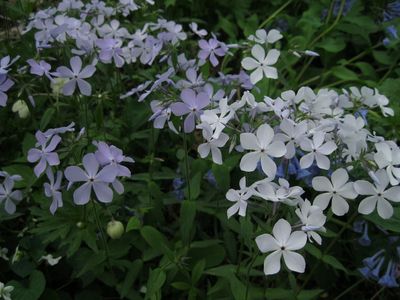What is Woodland Phlox?
Woodland phlox (Phlox divaricata) is a perennial that can be seen in dappled woodland or meadows from Quebec to Florida and west to Texas. You may know this plant by any of a number of other common names like Louisiana phlox, wild blue phlox, and wild sweet William. Woodland phlox is a relative of creeping phlox, a variety that grows in sun and spreads quickly. In contrast, woodland phlox prefers partial shade and spreads slowly. Woodland phlox plants have hairy, sticky leaves. The root system of woodland phlox plants forms a loose mat of foliage that can grow a foot high (31 cm.). Woodland phlox flowers are bright, fragrant, and attractive. They arrive in loose clusters at the stem tips in spring. Each flower has five petals in shades from sky blue to deep blue and violet.
How to Grow Woodland Phlox
If you are considering growing woodland phlox, you should be aware that the blossoms of the plant require pollination by long-tongued insects. Pollinators include tiger swallowtails, skippers, bumblebees, hummingbird clearwing, and sphinx moths. Fruits follow the flowers. The first thing to take into consideration is hardiness. The plants thrive in USDA plant hardiness zones 3 through 8. You’ll do best growing woodland phlox in medium moisture, rich soil that is well-drained. It prefers partial shade to full shade. These native plants require little maintenance, but you might add a light mulch in summer to help keep the moisture in the soil. Where to start growing woodland phlox? You can use this plant in rock gardens, cottage gardens, or native plant gardens. Or, if you want to plant spring bulbs, it makes a great shallow-rooted cover.
